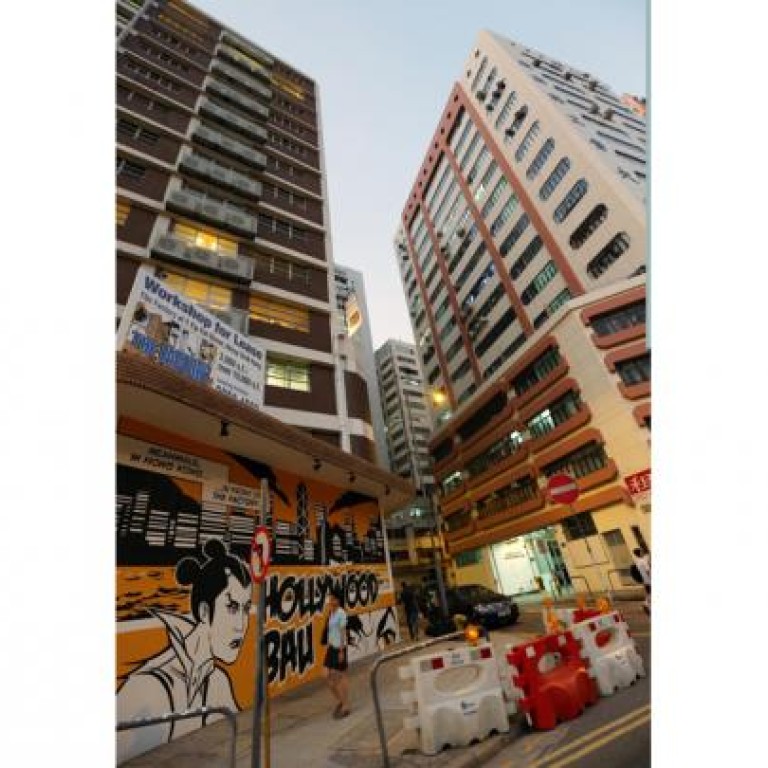
Why Hong Kong needs an entirely new approach to industrial property
Vacancy rates for the city's industrial property stands at 1 per cent, the lowest of any sector. But little is being done to address the problem
The main focus of last week's policy address was on increasing residential land supply, which was entirely expected as much of the government's activity and key policy announcements have been directed towards the residential market.

The industrial sector is often associated with manufacturing, and this is used to downplay the need for industrial space, given Hong Kong's diminished manufacturing base. But the reality is very different.
Demand for industrial space today is mainly for logistics facilities, light industry and back office/cheap office locations, as well as specialist factory operations and rapidly growing data centre developments.
Older, flatted factories provide a platform for SME activity, with many such businesses having roots in Hong Kong's heritage as a trading centre. In the case of garment and electronics manufacturing, while large-scale manufacturing has moved offshore, many operational functions including sales, design, and marketing, remain in Hong Kong, and a squeeze on space in these locations is driving up rents and impacting margins for SMEs in an already challenging macro-economic environment.
Without entering into the merits of increasing residential supply as a means to ease price growth, it is disappointing that great emphasis was placed on the rezoning of existing industrial space or industrial land for residential use. While the final impact on the residential market may be unclear, what is certain is that it further reduces the supply of industrial space in a market already close to full occupancy.
It is our view that government needs to the supply of industrial land for logistics, warehousing, and light industrial activity, rather than eating away at the current provisions.
Recently an international truck manufacturer with sizeable existing operations in multiple locations attempted to find a site to set up a large new assembly and servicing factory. But, after a year searching and many meetings with government officials, no such site could be found.
On the logistics front, which remains one of Hong Kong's pillar industries, the plight of occupiers - who for the most part are tenants - is approaching a critical level, with rents rising by about two per cent quarter-on-quarter for the past two years. There is no end in sight to the rent rises either, with lower cost buildings being lost to alternative uses, primarily offices and hotels, tightening supply even further.
Space in new developments is quickly snapped up. One year ago, the new 2.4-million-sq-ft Goodman Interlink development in Tsing Yi was 99 per cent pre-let on completion and is now fully occupied. This was an extraordinary rate of leasing activity for a development of this size, which was largely driven by occupiers consolidating and expanding into more modern facilities.
By the end of the year, the industrial market had vacancy rates of only 1 per cent, the lowest of all property sectors in the city, dispelling any notion of vast tracts of "old vacant warehouses" in Hong Kong.
Sadly, whilst the government has an abundance of land resources suitable for logistics development in and around Tsing Yi for high-value logistics centre sites, and large tracks of land in the Outer New Territories, there appears little serious impetus to fast-track these to boost supply.
Instead of one-off, industrial- to-residential projects with minimal meaningful residential supply being created, a much better focus would be to encourage the fast-tracking of lease modification processes to enable a more wide-ranging use of appropriate industrial sites that may still be held on restrictive land leases or are agricultural in nature.
Better control of these future industrial developments will encourage better infrastructure planning to ensure they are quarantined and are not encroached by non-compatible residential and alternative uses. Land close to existing and planned cross-border zones and marine hubs such as the River Trade Terminal should be considered seriously for such projects.
Although we support increasing the supply of industrial land, we do not call for all current stock to remain classified as industrial use. Areas evolve and, with time, some may outgrow their original industrial base.
In areas where the prevailing industrial uses are very light or mostly for offices, technology firms or creative industries, mixing industrial activity with residential use could be considered and may be an option, rather than simply pushing for total redevelopment. This has already happened in places like Fo Tan and Aberdeen where there are more than just a few "residents" in these industrial buildings enjoying the large floor plates, cheaper rents or purchase cost, and often impressive views.
Rather than charging owners up-front with lease modification premiums, this could be negotiated before the change but the requirement for payment delayed until sale of the property. Certainly this would provide a platform to promote Hong Kong's emerging creative entrepreneurs in the arts and IT sectors.
With so many uninspiring mega-residential developments scattered around Hong Kong maybe a New York style Meat Packers District style concept would be something worth pursuing for a suburb like Tai Kok Tsui to draw in galleries, bars and restaurants and provide a more diverse activities for residents. Darren Benson is Senior Director, CBRE Industrial & Logistics Services, Hong Kong, Macau & Taiwan.
